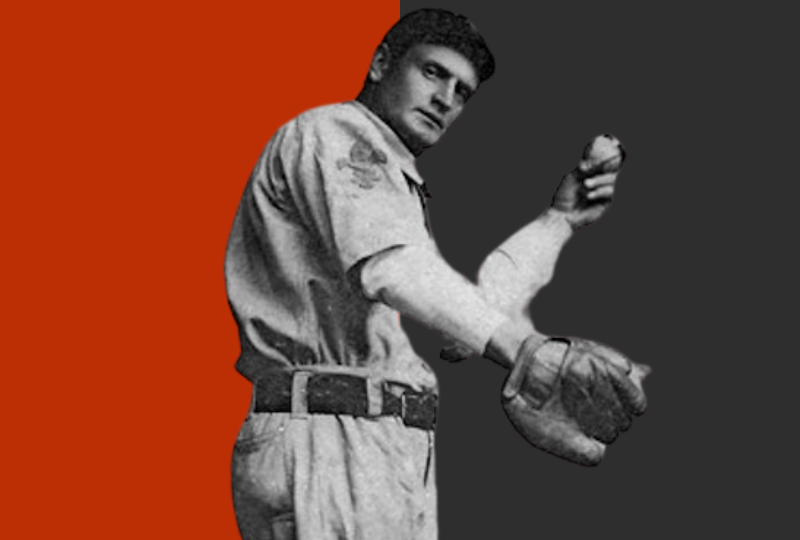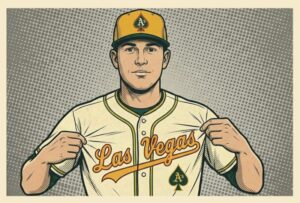As we’ve learned via our list of the 100 Greatest Pitchers of All-Time, baseball fans love to debate.
Even after more than 150 years of professional, our top-ranked pitcher remains Walter Johnson, who threw his first pitch more thana century ago. But even Johnson walked in the steps of those who pioneered major league pitching. In the 19th century, the game featured many star hurlers. That’s what this list is: the 10 greatest pitchers whose career started before 1900.
Cy Young
How hard did Cy Young throw? Scientists believe there’s a limit to how hard a baseball can be thrown. The arm and shoulder can only withstand so much torque. That limit, the “gas ceiling” if you will, is somewhere around 105 miles per hour. Give or take a mile. We’re at that limit now, and we’ve been near the limit for more than 45 years, since Nolan Ryan was reliably measured at 101.9 miles per hour in the early 1970s.
Many of the fastest throwers were speed-tested, including Walter “Big Train” Johnson, Smoky Joe Wood, Dazzy Vance, Lefty Grove, Satchel Paige, Bob Feller, and others. Feller was clocked at 101 miles per hour, but the methodology used to test his fastball was probably overstating it by about 2-3 miles per hour. If we assume Feller topped out at about 98-100 MPH, we can speculate that Grove probably threw close to that. This was the 1930s and baseball had seen a line of fast pitchers throughout the years. Who’s to say that Grove and Feller weren’t already about 95 percent of the way to the gas ceiling? Professional baseball was 70 years old or so. Countless thousands of games and tens of thousands of pitches had been tossed. The most extreme physical specimens, the lucky ones with golden arms, could marshal the muscles, tendons, and tissue of their shoulders to fire a baseball pretty damn hard.
Young was a thick man blessed with a barrel chest, broad shoulders, and long arms. No motion pictures were ever taken to show his pitching form, but we have photographs. In the photos taken when Young was actually pitching, his weight is shifted back on his rear right foot, his powerful chest is prominent, and his arm is away from his body, in a three-quarter sidearm motion. That motion would have placed less stress on Young’s shoulder than throwing overhand. It would have allowed him to hide the baseball behind his large frame.
I’m comfortable assuming that Young and the other hardest throwers of the early years of the twentieth century could throw a baseball as fast as 95 miles per hour. It was only about 15-20 years before Grove would appear on the scene. Johnson and Wood probably threw harder than Young, Lefty threw harder than them, Feller was at least as fast, and Koufax was faster, and so on.
But in Young’s prime, it was unusual to throw hard often. A pitcher would choose his spots to bear down. Christy Mathewson called it “pitching in a pinch.” A pitcher like Young might only throw 94-95 miles per hour two or three times per game. That’s why Walter Johnson was so transcendent: he threw 95+ far more often than others. Grove took a step further, and Feller built on that.
Rube Waddell
In 1905, Waddell was probably influenced by gamblers to tank at the end of the season. A’s manager Connie Mack removed Waddell from his rotation down the stretch, fearful that the lefty would purposely lose games. The A’s won the pennant, but Waddell never appeared in the World Series, which the Giants won anyway. One report claims that Rube was offered $17,000 to fake an arm injury so he wouldn’t appear in the postseason. The A’s lackluster play in the 1905 World Series prompted speculation that some members of the team were bribed to give less than an honest effort. Mack brought Rube back in 1906, but Waddell was rarely again trusted in crucial contests.
In 1911, Waddell was living on a farm in Kentucky when a winter snowstorm caused the Mississippi River to flood. Rube stood in icy water for hours stacking sandbags to combat the flooding, and he caught pneumonia, and eventually tuberculosis. A little over two years later, a weakened Waddell, 70 pounds under his playing weight, died at the age of 38. Upon his death, Harold Skelton of The Sporting News penned an ode:
No more will batters fear his skill, For Rube Waddell is gone;
No more will he mow the batters down, As he always has done;
So, when you talk of Johnson, Wood, Bender and the rest;
Just speak one word for Rube Waddell, When he was at his best.
Joe McGinnity
McGinnity teamed with Christy Mathewson to form a superb mound force for John McGraw’s Giants in the first decade of the twentieth century. Iron Joe won 28 games as a rookie, and 28 in his second season. He holds the modern record for most wins by a rookie, through two seasons, three seasons, four seasons, five seasons, six seasons, eight seasons, nine seasons, and ten seasons. He won 246 games in only ten seasons, and he completed 82 percent of his games. He was 37 years old in 1908 and had already started to slip, so the Giants released him the following February.
Vic Willis
“Willis threw overhanded, from way over his head, using every inch of his vast height, reinforced by a lofty hill. The ball, therefore, came down on a lightning slant, and you never knew when it would cave you in.” — The Sporting News
John Clarkson
Clarkson was born the same year that the U.S. Civil War began. He threw underhand and sidearm, and adapted to toss overhand as he matured. In 1885, he started 70 games and won 53.
Kid Nichols
Came into pro baseball at the same time as Cy Young, and for a decade he was just as good, if not better. Nichols relied on a nasty breaking pitch to go with a knee-high fastball. He won his 300th game when he was only 30 years old.
Mickey Welch
Yes, he was cheerful. Does that answer your question about his nickname “Smiling Mickey?” His real name was Walsh, but some idiot sports editor got it wrong, and he became Welch after that. He was a strikeout pitcher: once he fanned the first nine batters in a game.
Amos Rusie
Sort of the Sandy Koufax of his time: Rusie had only five very good seasons. Otherwise, he was working on taming his pitches. Has one of the greatest nicknames in baseball history: “The Hoosier Thunderbolt.”
Jack Chesbro
If we set 1901 as the beginning of MLB’s modern era, Chesbro holds the single-season records for wins (41), games started (51), and complete games (48).
Chesbro was a junkballer mostly, relying on an excellent spitter and an eephus pitch. He pitched New York to the 1904 pennant. He was also the first pitcher to face Ty Cobb in the big leagues.
Tim Keefe
Keefe bridged the gap between two eras: his first MLB season was the last in which pitchers threw from 45 feet. His final season was the first season in which pitchers hurled from the modern distance of 60 feet, 6 inches. For the middle part of his career he threw the ball from 50 feet, and he used many arm angles. He was the second pitcher to win 300 games.







